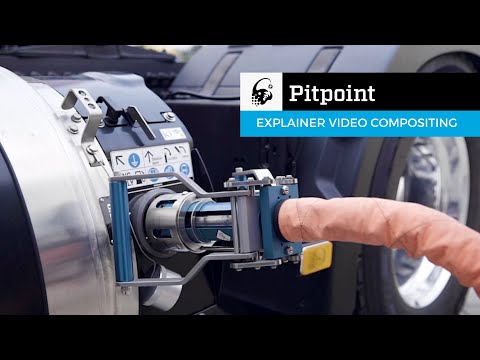The Device Chronicle spoke to Willem Remie, a software architect and electrical engineer by training, and co-founder of Drebble.io and Hawkeye. Willem explains the challenges and opportunities in using Yocto, Raspberry Pi embedded devices and OTA software updates in industrial applications through the lens of a dynamic young technology entrepreneur.
PLC pedigree meets Yocto Raspberry Pi skills
Willem has a very practical experience with industrial automation, programming programmable logic controllers (PLCs), HMIs and SCADA systems, He has been programming these types of systems since the age of 13 with mentorship from his father who has been active in the oil and gas industry professionally. Willem says “My father always brought his work back home with him. We had PLCs controlling the watering system in the garden so it was easy to be infected with technology.” Now he has added Yocto, Raspberry Pi embedded devices and OTA software updates to his portfolio of skills.
Practical and academic
Willem started his career in a very practical way: driving service vans and progressing to software development and studies of industrial automation. Then he went to the Technical University of Eindhoven where he studied electrical engineering and graduated in control systems. He then started interacting with industry and in April 2019, he founded Drebble.io and Hawkeye Recognition B.V. with his partner Pascal den Boef to bring industrial IoT solutions with technologies such as Yocto, Raspberry Pi embedded devices and OTA software updates.
Industrial automation with Yocto Raspberry Pi
Drebble’s mission is to form a bridge between scientific knowledge available at universities and the need for such knowledge in the industry. The OTA software updates solution Mender.io which supports Yocto and Raspberry Pi embedded devices has been used in several of Drebble’s and Hawkeye’s projects. Willem adds “Many industrial clients have low to no awareness of OTA software updates and the strategic value it delivers. It is used effectively in the background.
Total Gas Mobility project with Yocto Raspberry Pi
Drebble has developed dispenser displays for a network of 17 gas stations across the Netherlands, Belgium and France. Trucks come into the filling stations and are filled up with liquid gas (LNG). A user interface guides the truck driver through the process, Willem explains. Total Gas Mobility commissioned the project. The solution uses Raspberry Pi embedded devices, BootQT for the Human Machine Interface design and development, Yocto as the Linux OS build and Mender.io for the system software updates over the air. The challenge has been making the project work in a closed infrastructure with an old fashioned VPN infrastructure and connected to a data centre. It’s hard to integrate in existing infrastructure which is very closed by nature.

OTA software updates and Yocto Raspberry Pi keep up with change
OTA software updates are extremely important in digital dispenser systems for LNG because the process may change and the UI needs to be updated quickly. As Willem says “We don’t want to drive around to 17 sites. Logging functionality has been built to check for irregularities, and to show the client what happened over a certain period of time.”
Knowledge on client slide may not be there
Often in mechanical and non-software industries, the technical knowledge of the client of AI, edge, Linux and OTA may not be so extensive. “It is such specific knowledge that a lot of businesses do not have the internal resources to facilitate this domain. Everything is usually done on an outsourced project basis and therefore you have to demonstrate value quickly. This can be hard to do.”
Siemens experience
Willem has also been implementing PLCs, HMIs and Yocto-based gateways with Siemens Mindsphere for Total Gas Mobility across Europe. The gateways are connected to the cloud, to get the data coming in so analysis can be conducted. Cybersecurity and GDPR are critical concerns for Total and Siemens have the scale to handle this themselves so Drebble.io will look after the integration parts. Open source is a key part of the solutions developed in these projects. Mindsphere combines open source into their solutions.
Challenges with size in the Netherlands
Willem says that most companies in the Netherlands are medium-sized companies with limited resources and limited technical knowledge to really exploit IoT and digital technologies at this stage. There is also an education process that is underway. There is a big gap between knowledge from the new generation and industry which is trying to keep their operations running in the current economic environment. Incubation units at Technical University of Eindhoven are doing work to educate companies on IoT, AI and Blockchain, but the effort is great and difficult.
Caution and conservatism
There can be conservative resistance in more traditional industries to digital transformation. Willem adds “You can do an MVP, and then it ends up on the shelf. Then you have a hybrid model where you enter into a longer term commitment with the client and look at 10 to 20 years horizon, help them with the strategy and vision. This is the best way for a startup company to proceed.” Willem advises.
Hawkeye and AI
Willem runs a second company called Hawkeye offering computer vision services. In one project he describes, Nvidia Jetson devices, the Hawkeye OS and Mender.io are in operation at 50 locations. License plate recognition is carried out based on deep learning. Embedded devices are placed at car washes, so the car wash owners can sell services to their customers to automate the car washing services. There are no cash payments, debit or credit card payments but frictionless payment models based on digital subscriptions. “We are pushing towards the self-automation of service stations.”Willem remarks.
Training the machine models for edge devices
There are some challenges with the AI in this project that must be overcome. When seasons change or when some clients place new cameras at the station, lighting changes are detected, sun is low and accuracy of models decrease. So the training models must be retrained to increase the accuracy and update the model to the edge devices. Willem explains that a canary deployment is used to minimise the risk of the roll out and then the scale of the roll out expands over weeks.
Willem’s plan for the Hawkeye OS is to release it open source using meta Mender for OTA software updates. Willem acknowledges the benefits of using Mender. “You get complete technological freedom, perfect for Drebble.io as we do not want to be vendor-locked.” For this reason, Willem and his colleagues at Drebble.io keep their options open using a mix of tools and platforms from AWS, Azure, GCP to Mender and Balena. “Also with Mender, you can try it out and if you see the value you can invest in the enterprise model. Mender is more technology-orientated than other options.”
Desire for Docker
Docker is another favorite for Drebble.io. “There are many integrations with the customer systems and 3rd parties, and Docker enables this, Nvidia with Jetson allows us to pass through the GPU resources to the containers. One Hawkeye device based on Nvidia Jetson Xavier NX is trying to push the boundaries on what’s possible with recognition, entering fuel stations with a lot of existing cameras, connecting the Hawkeye device and connecting to existing network and take the RTSP streams, do our analysis and then being able to send insights from this data to whatever system the clients requires. Compared to traditional security companies, this has been an eye opener, no IT efforts required but all modern security is there.
CCTV cameras are installed, devices are installed and a dashboard made available to do basic configuration settings. License plate recognition is not the novelty, it is the complete product – joint venture with a loyalty system. The data shows that the customer that came 4 times per year is now coming 8 times per year, you must sell the bigger value picture and the OTA is a key module within that. “Purely OTA without the bigger picture is hard to sell.”
Exciting change ahead
Willem believes that IoT combined with blockchain will facilitate huge gains for industry in the coming years. He says, for example, the Electric Vehicle infrastructure in its current form akin to modern technology wrapped up in an “old jacket”. “EV charging stations come with tremendous friction. They still require specific cards, specific drop ins and for the driver/customer identify themselves explicitly in some way, There are also just too many different platforms vying for consumers’ attention.” Willem believes that going forward “We will be able to improve EV charging by optimising supply and demand with blockchain.” Willem observes that the power infrastructure may be unable to keep up with the rapidly growing number of EV charging points being installed in countries across Western Europe. He says the power network has its limits and that the energy providers cannot go any faster in upgrading the network. Therefore, there will be a very strong need to optimise the EV charging nodes so they can transfer and balance power consumption across fleets based on changing demand across the network.
Bridging the gap between OT and IT
In order to keep up with digitalisation, Willem agrees that industry has to close the gap between operational technology (OT) and IT. When more and more industrial assets are being connected to some form of data collection system, previously isolated systems have their shortcomings exposed. Also, industrial automation can be a conservative discipline and it still needs to adapt to and embrace IT concepts such as DevOps. Traditionally, industrial automation projects have used waterfall methodology and often, once the project has been commissioned, the machine or process can operate for years without any updates. Therefore, data collection is the first major hurdle on the journey to become a data-driven organisation. He concludes “By using edge devices, data can be extracted from all kinds of industrial equipment. OTA software updates play a major role in keeping edge systems protected with the latest security standards. Besides, talking about edge computing, developing and deploying edge applications is a no-go without OTA software updates.”
We wish Willem and his colleagues at Drebble.io well in helping industry embrace IoT automation.
